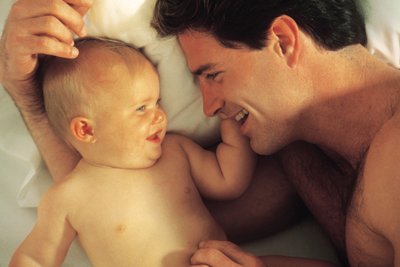
Features
Practice
Technique
Infants and their families
Infant massage has become mainstream in the new parent circles since Vimala McLure’s original book ‘Infant Massage A Handbook for Loving Parents’ in 1979. She was among the first to write about massage in general and specifically infant massage.
September 18, 2009 By Linda Hickey RMT
Infant massage has become mainstream in the new parent circles since Vimala McLure’s original book ‘Infant Massage A Handbook for Loving Parents’ in 1979. She was among the first to write about massage in general and specifically infant massage.
The organization that grew from this early work – The Association of Infant Massage – was growing and training instructors around the world.
Other pioneers in the field of exploring massage and children, like Marybetts Sinclair – Massage for Healthier Children in 1992, the voluminous work of Tiffany Field and her colleagues at University of Miami School of Medicine and the Touch Institute, have helped give credibility to the application of massage to
children in general and in specific treatment circles.
 |
|
|
The International Association of Infant Massage promotes massage be given by a parent /caregiver and works to instruct and support parents in their skills and comfort level with massaging their children.
This key foundation principle is intended not to interrupt bonding needs of the baby and parent, but encourages us to honour and promote the bond between parent and child. Loving, nurturing touch needs to come first from parents, then we can all work to that end in our practices and in our work with children.
For the massage therapist there are occasions where she may be the primary provider of massage, usually with the intent of treatment.
In order to evaluate the infant’s muscle tension, range of joint mobility, and to create specific massage and stretching treatment plans we need to have our hands on babies.
In my Family Practice, my clients are mothers and fathers and children – throughout the childbearing and child raising years. I regularly see infants with fascial restriction.
Depending on the positions that the baby has assumed in-utero, occasionally there can be thickening or shortening of fascia around joints; the most common ones are the neck, hips, ankles and toes. After birth, the activities of daily care giving generally allow the baby to stretch and move out of contracted joint positions. Occasionally the tissues need attention for the baby to assume full range of movement at joints.
In utero, baby feet are usually held in exaggerated plantar flexion and adduction with the ankles crossed.
As the baby develops, her hips rotate inwardly while the feet gradually rotate out. Restraints from the uterine wall along the way may cause the feet to be restricted in a clubfoot or equinovarus position.
Working with muscles that act on the foot, and gentle graduated stretching through the ankle, foot and toes can assist the baby in full range of movement and a more functional pattern of movement.
Shortening of the sternocleidomastoid and scalene muscles, or upper trapezius border can impact a baby’s ability to nurse from both breasts resulting in challenges to successful breastfeeding.
Gentle fascia stretching and mobilizing with positioning supports can alleviate this over a few weeks with parents also working with massage and movement with their babies.
Most babies who have trouble with digestion and managing intestinal gas in their early weeks and months and can be greatly helped through abdominal massage.
While teaching dolls can and should be used to show the parents what to do at home, the therapist’s more confident hands on the abdominal tissues can be re-assuring to the baby while the parents observe, model and build confidence.
There are also opportunities to work with babies and children with special challenges, usually in conjunction with other therapists. Babies with motor and other developmental disabilities and their families would all benefit from a general relaxation and calming massage, as well as specific therapeutic techniques to address individual concerns.
Print this page